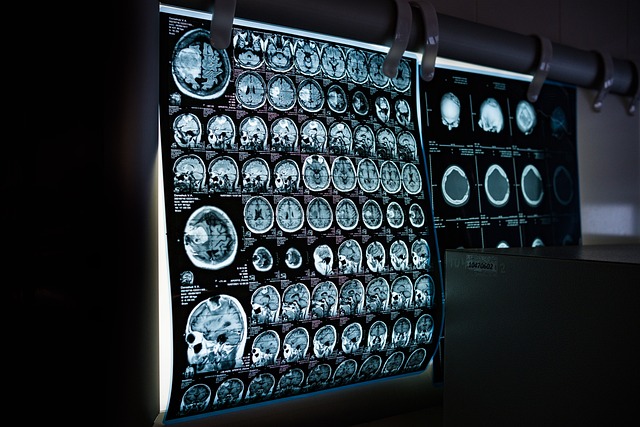Understanding Radiation Therapy: Side Effects, Advances, and Safety
Radiation therapy insights provide information on using targeted radiation to address certain medical conditions. Learning about treatment approaches, potential effects, and safety considerations can help patients and caregivers understand how this therapy may fit into overall care plans.

Radiation therapy remains one of medicine’s most powerful tools in fighting cancer, using carefully targeted energy to damage cancer cells’ DNA and stop their ability to grow and divide. This treatment approach can be delivered externally using machines that direct radiation toward cancer or internally by placing radioactive material inside the body. For many patients, radiation therapy represents a crucial component of their treatment plan, either alone or in combination with surgery, chemotherapy, or immunotherapy.
Understanding Radiation Therapy Side Effects and Management
While radiation therapy effectively targets cancer cells, it can also affect healthy tissues in the treatment path. Common side effects vary depending on the treatment area but often include fatigue, skin changes (redness, blistering, or peeling), and localized hair loss. When radiation targets specific body regions, patients may experience additional symptoms—digestive issues for abdominal treatment, dry mouth or difficulty swallowing for head and neck radiation, or breathing challenges for chest radiation.
Managing these side effects has become increasingly sophisticated. Medical teams now employ proactive approaches including specialized skin care protocols, nutritional support, and medication to address symptoms before they become severe. Patients are typically advised to prioritize rest, maintain proper nutrition, and stay hydrated throughout treatment. Additionally, healthcare providers often recommend gentle exercise when appropriate, as studies show this can help combat fatigue and improve overall well-being during radiation therapy.
Advances in Radiation Therapy Research and Insights
The field of radiation oncology continues to evolve rapidly, with technological innovations dramatically improving treatment precision and effectiveness. Image-guided radiation therapy (IGRT) uses advanced imaging techniques to verify the exact position of tumors before each treatment session, allowing for millimeter-precise targeting. Intensity-modulated radiation therapy (IMRT) further refines this approach by varying radiation intensity across the treatment field, delivering higher doses to tumor regions while sparing surrounding healthy tissues.
Particle therapy represents another frontier in radiation oncology research. Unlike conventional photon-based treatments, proton therapy and carbon ion therapy use charged particles that deposit most of their energy at a specific depth, potentially reducing damage to healthy tissues beyond the tumor. Meanwhile, adaptive radiation therapy adjusts treatment plans throughout the course based on changes in tumor size or patient anatomy, optimizing effectiveness while minimizing side effects.
Researchers are also exploring combinations of radiation with immunotherapy, as evidence suggests radiation may enhance immune system recognition of cancer cells. This synergistic approach could potentially improve outcomes across various cancer types, particularly for patients with advanced or resistant disease.
Radiation Therapy Safety and Effectiveness Insights
Modern radiation therapy achieves its remarkable safety profile through multiple layers of quality assurance. Before treatment begins, medical physicists perform rigorous machine calibrations, and treatment plans undergo peer review. During sessions, computerized monitoring systems continuously verify radiation delivery parameters, while image guidance ensures precise targeting. This comprehensive approach has established radiation therapy as a safe treatment option with well-understood and manageable risks.
Effectiveness varies by cancer type, stage, and individual patient factors. For early-stage cancers like prostate, breast, and certain lung cancers, radiation therapy often achieves cure rates comparable to surgery with less invasive procedures. In more advanced cases, radiation frequently provides significant tumor control and symptom relief. The five-year local control rates—meaning the cancer does not return in the treated area—can exceed 90% for certain cancer types when radiation is appropriately administered.
Patient selection plays a crucial role in treatment success. Oncologists carefully evaluate factors including cancer type and stage, overall health status, previous treatments, and patient preferences before recommending radiation therapy. This personalized approach helps ensure that patients receive the most appropriate and effective treatment for their specific situation.
Personalized Treatment Planning in Radiation Oncology
The evolution toward personalized radiation therapy represents one of the field’s most significant advances. Treatment planning begins with sophisticated imaging—including CT scans, MRIs, and sometimes PET scans—to create detailed three-dimensional maps of the patient’s anatomy and tumor location. Radiation oncologists use this information to design individualized treatment plans that consider tumor characteristics, surrounding organs, and patient-specific factors.
Artificial intelligence and machine learning algorithms increasingly assist in this process, analyzing vast datasets to help predict treatment responses and potential side effects for individual patients. These technologies can identify subtle patterns in imaging data that might escape human detection, potentially improving treatment precision. Additionally, genetic testing and molecular profiling help determine which patients might benefit most from radiation therapy or specific radiation approaches, further refining the personalization process.
Future Directions in Radiation Therapy
The horizon for radiation therapy includes several promising developments that may further transform cancer treatment. Ultra-high dose rate radiation therapy (FLASH therapy) delivers radiation in microseconds rather than minutes, potentially reducing side effects while maintaining or improving effectiveness. Early research suggests this approach may spare healthy tissues through biological mechanisms not yet fully understood.
Miniaturized radiation delivery systems represent another emerging technology, potentially allowing more precise targeting of difficult-to-reach tumors. Meanwhile, real-time tumor tracking systems compensate for movement caused by breathing or other bodily functions, ensuring radiation remains focused on the target even as it moves.
Biomarkers that predict radiation sensitivity continue to be identified, potentially allowing oncologists to adjust radiation doses based on individual tumor characteristics rather than using standardized protocols. This approach could maximize effectiveness while minimizing unnecessary treatment for resistant tumors.
Radiation therapy continues to evolve as a sophisticated, effective cancer treatment option. Through ongoing research and technological innovation, the field strives to improve cure rates while enhancing quality of life for patients during and after treatment. As personalized approaches become increasingly refined, radiation therapy will likely maintain its central role in comprehensive cancer care while becoming even more tailored to individual patient needs.
This article is for informational purposes only and should not be considered medical advice. Please consult a qualified healthcare professional for personalized guidance and treatment.




